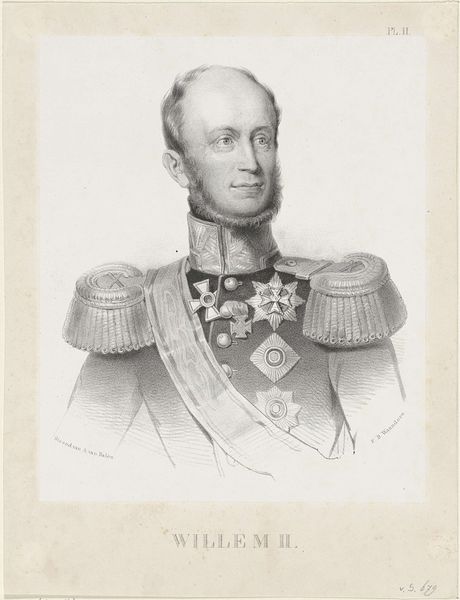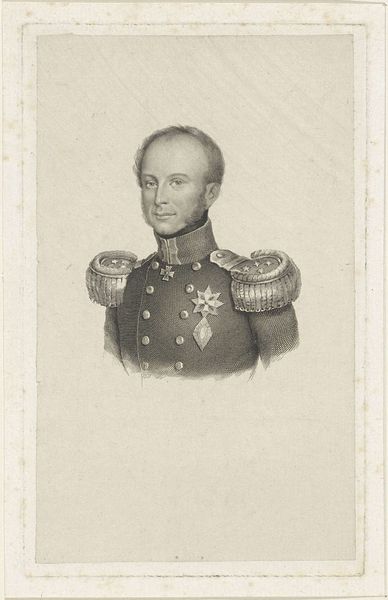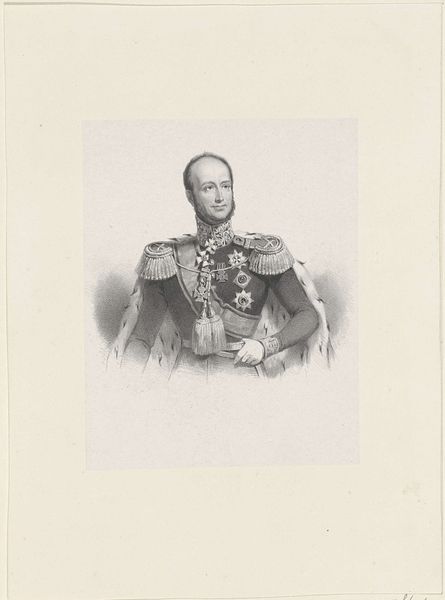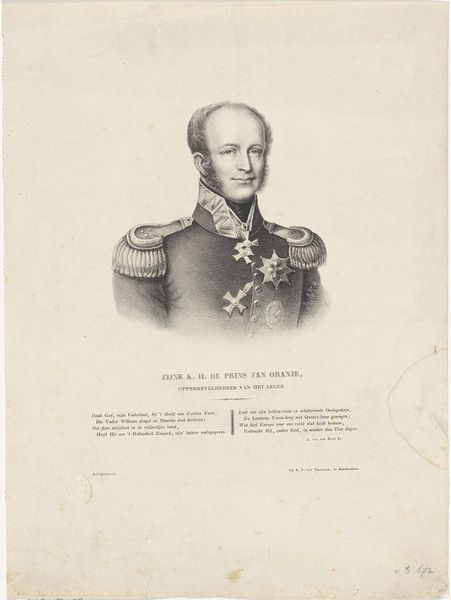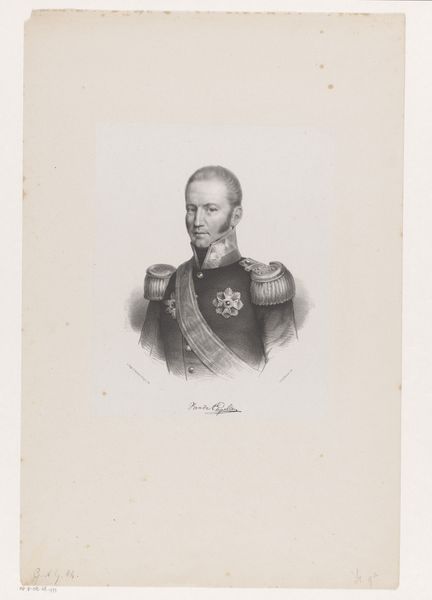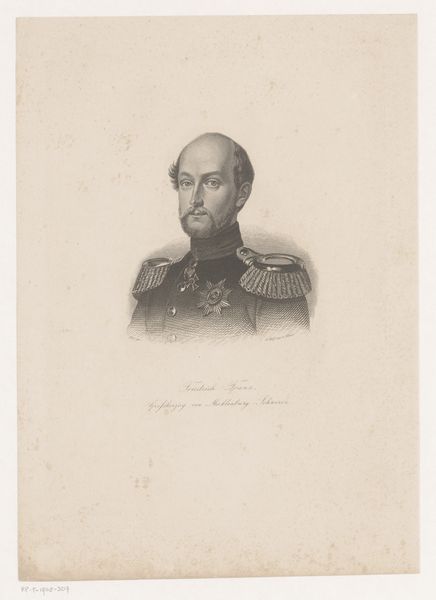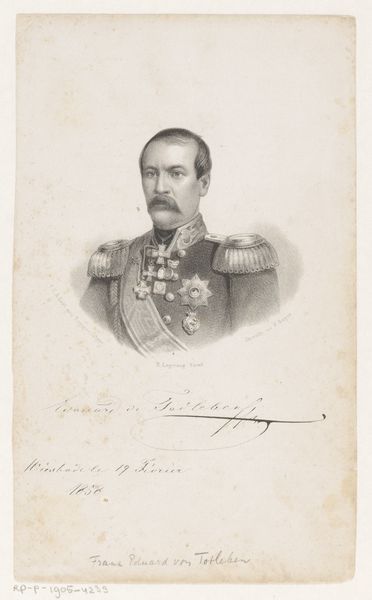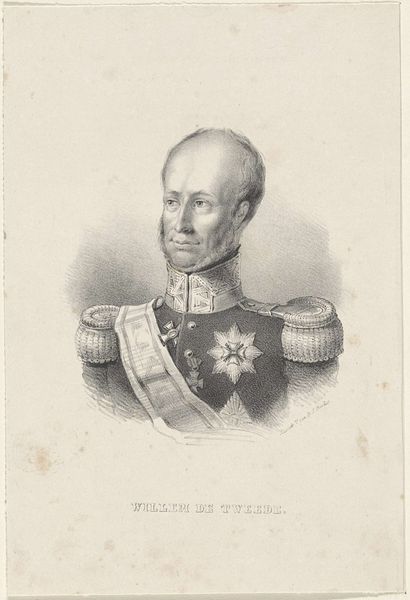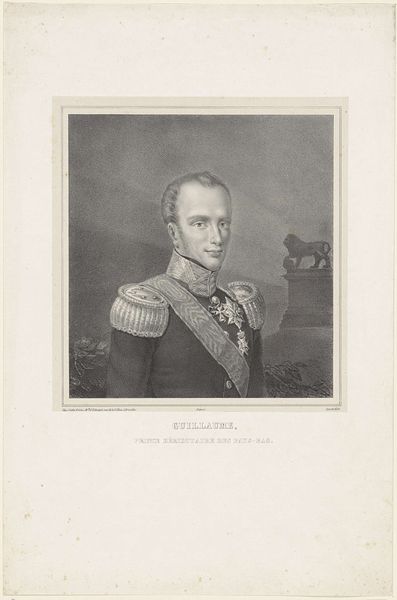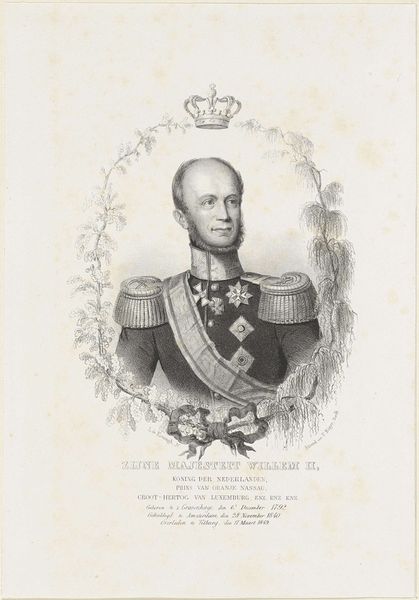
engraving
#
portrait
#
pencil sketch
#
romanticism
#
pencil work
#
engraving
#
realism
Dimensions: height 200 mm, width 140 mm
Copyright: Rijks Museum: Open Domain
Curator: This is "Portret van Koning Willem II", an engraving by Warner Gijselman, created after 1837. Editor: It possesses a certain austerity. The delicate, gray-toned strokes form a reserved portrait of the monarch, whose sharp gaze is almost intimidating, rendered solely via grayscale contrasts. Curator: Indeed. We see Gijselman utilizing engraving techniques that allow for both detailed realism and an engagement with the romantic style of the time. Note the meticulous depiction of the royal attire – each medal, epaulette, and sash intricately rendered, conveying status. The very conscious construction reveals a commitment to realistic portraiture, but its overall tone still reflects Romantic ideals of heroism and leadership. Editor: It's interesting how the linear quality affects perception. The light is so distributed to reveal what appears to be the reality of the portrayed. You almost don't feel the underlying pencil sketch work which does convey that realistic sensibility of the time. Curator: And it must be recognized that this isn't just a neutral depiction. Images of rulers always served a propagandistic role; and this one is a classic example. How Willem II wishes to be perceived in public life. Editor: Agreed, though there is also the fact that Willem's later rule was a period of increasing liberalization within the Netherlands, a shift from his more conservative predecessor. Curator: So even if the artist has intentions, that political situation must also come to the forefront of how we might perceive that particular portrait. It raises questions about authorship. Editor: And considering his later role, one may wonder about the choice of portraying the king this way: as this solemn but firm military figure. The material nature of the engraving contributes too, each precise cut solidifying an impression of authority, doesn't it? Curator: In considering what can be seen versus not. What this means to the social politics within the Kingdom in the late 1830's gives me much to consider when evaluating it as a symbolic object. Editor: A compelling work for all those points made indeed. It certainly has been a worthwhile dive into the political, social and philosophical aspects of the portrait of the King Willem II.
Comments
No comments
Be the first to comment and join the conversation on the ultimate creative platform.
